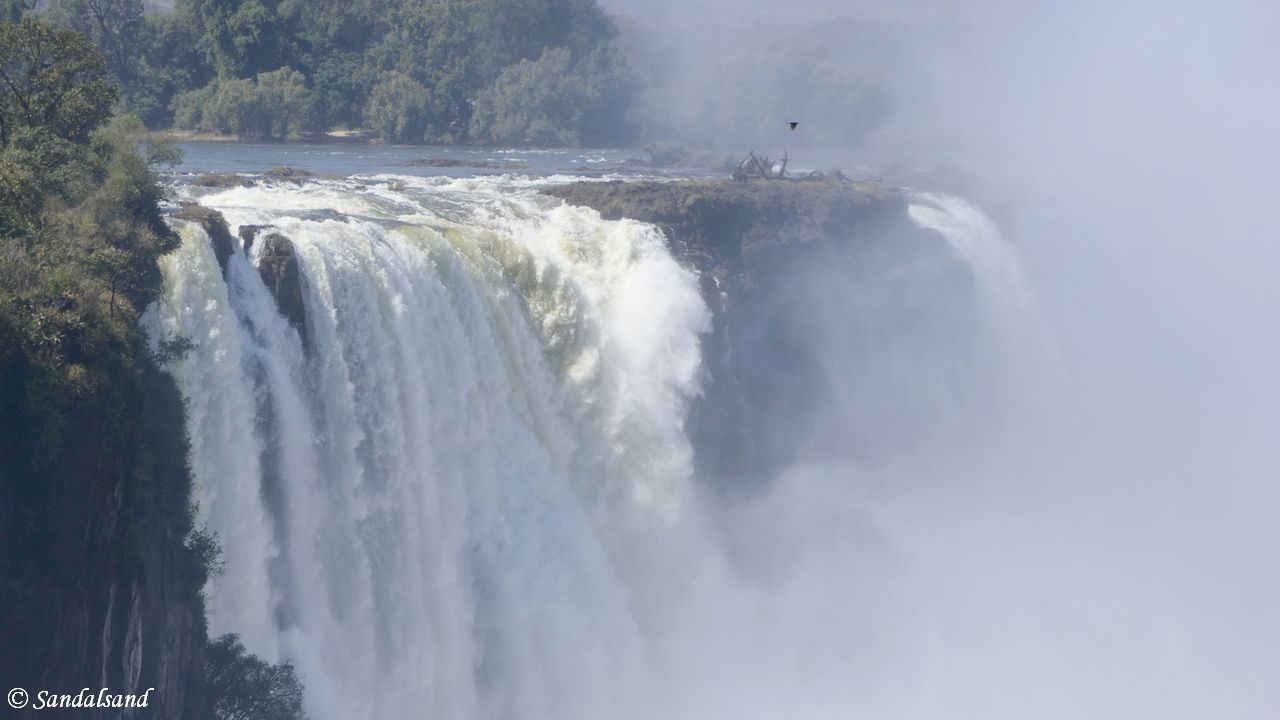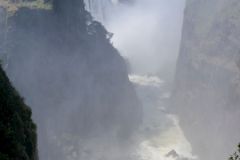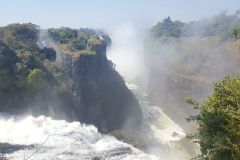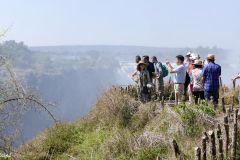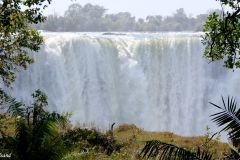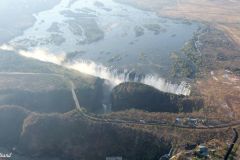The Mosi-oa-Tunya / Victoria Falls is spectacular and overwhelming. And wet. This was an exciting grand finale of a wonderful safari in Southern Africa.
The UNESCO World Heritage List includes more than a thousand properties of outstanding universal value. They are all part of the world’s cultural and natural heritage.
Official facts
- Country: Zimbabwe and Zambia
- Date of Inscription: 1989
- Category: Natural site
UNESCO’s World Heritage Centre’s (short) description of site no. 509:
These are among the most spectacular waterfalls in the world. The Zambezi River, which is more than 2 km wide at this point, plunges noisily down a series of basalt gorges and raises an iridescent mist that can be seen more than 20 km away.
The Mosi-oa-Tunya / Victoria Falls is the world’s greatest sheet of falling water and significant worldwide for its exceptional geological and geomorphological features and active land formation processes with outstanding beauty attributed to the falls i.e. the spray, mist and rainbows. This transboundary property extends over 6860 ha and comprises 3779 ha of the Mosi-oa-Tunya National Park (Zambia), 2340 ha of Victoria Falls National Park (Zimbabwe), 741 ha of the riverine strip of Zambezi National Park (Zimbabwe).
My visit
With a span of 1708 metres and an average height of 100 metres, this waterfall is huge. The spray can be intense and most people get wet. I arrived here in 2018 and spent my first morning walking on the Zimbabwean side.
In the afternoon I had a helicopter trip over the Mosi-oa-Tunya / Victoria Falls. I spent the next day around the town of Victoria Falls, and crossed the bridge to the Zambian side. There I stayed a night in the town of Livingstone.
I’ll return with an article with more text and more images. Here is a link to an article with a description of the context of my visit.

